'The King of Hell was fat from gorging on souls and he expelled some more from his bowels': The many guises of the Devil Antiquity to present day
Taking as many guises as his names, the Prince of Lies turned at times into a man-devouring ogre, a mutant medley of claws, horns and wings, or the brooding rebel that lit the imagination of Romantic painters.
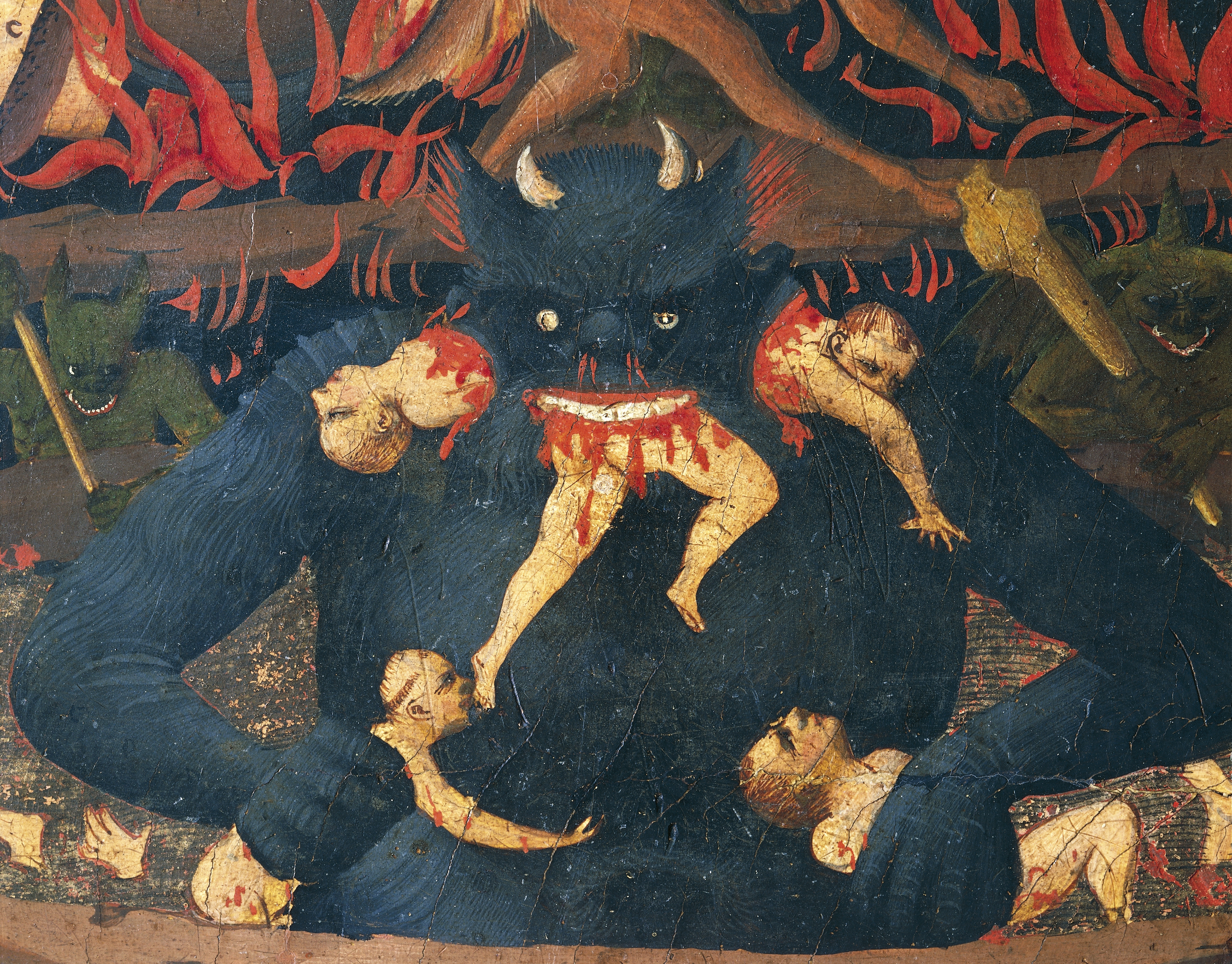

Haloed in darkness, naked but for a sheer gauze across his loins, Satan stands fierce on the edge of a flaming sea and raises his arms, muscles rippling under the weight of his staff, to call his legions. ‘Awake, arise, or be for ever fallen!’
With only his glowering eyes and the snake circling his helm marking him as the Devil, Sir Thomas Lawrence’s handsome antihero is a far cry from the be-tailed monsters that boiled fallen souls in the 12th-century mural at Chaldon Church, Surrey.
Vigorous or deformed, fearsome, humbled or desperate, the Devil has been shapeshifting since he made his artistic debut in late Antiquity, taking on as many forms as his names — Satan is the adversary, Lucifer the fallen angel — or, indeed, the religions for which he was the bogeyman (Islam alone has a bevy of devils, led by Iblis, also called Ash-Shaytan).
One of its earliest appearances in a Christian context, according to Italian art historian Laura Pasquini’s 2024 book on diabolic iconography (Il Diavolo. Storia Iconografica del male), is a profile on the mosaic of the basilica of Santa Maria Assunta in the town of Aquileia, Italy. It was made in the 4th century, at a time when the Church was debating whether images had a place in worship or were perilous relics of paganism. With one eye staring fixedly from a tile, forehead frowning under a single, untamed curl and tongue protruding from his mouth, the Devil’s image is reminiscent of the evil-warding masks used in Bacchic and other early rituals — there to warn the faithful of the dangers of embracing the very rites from which it drew its shape.
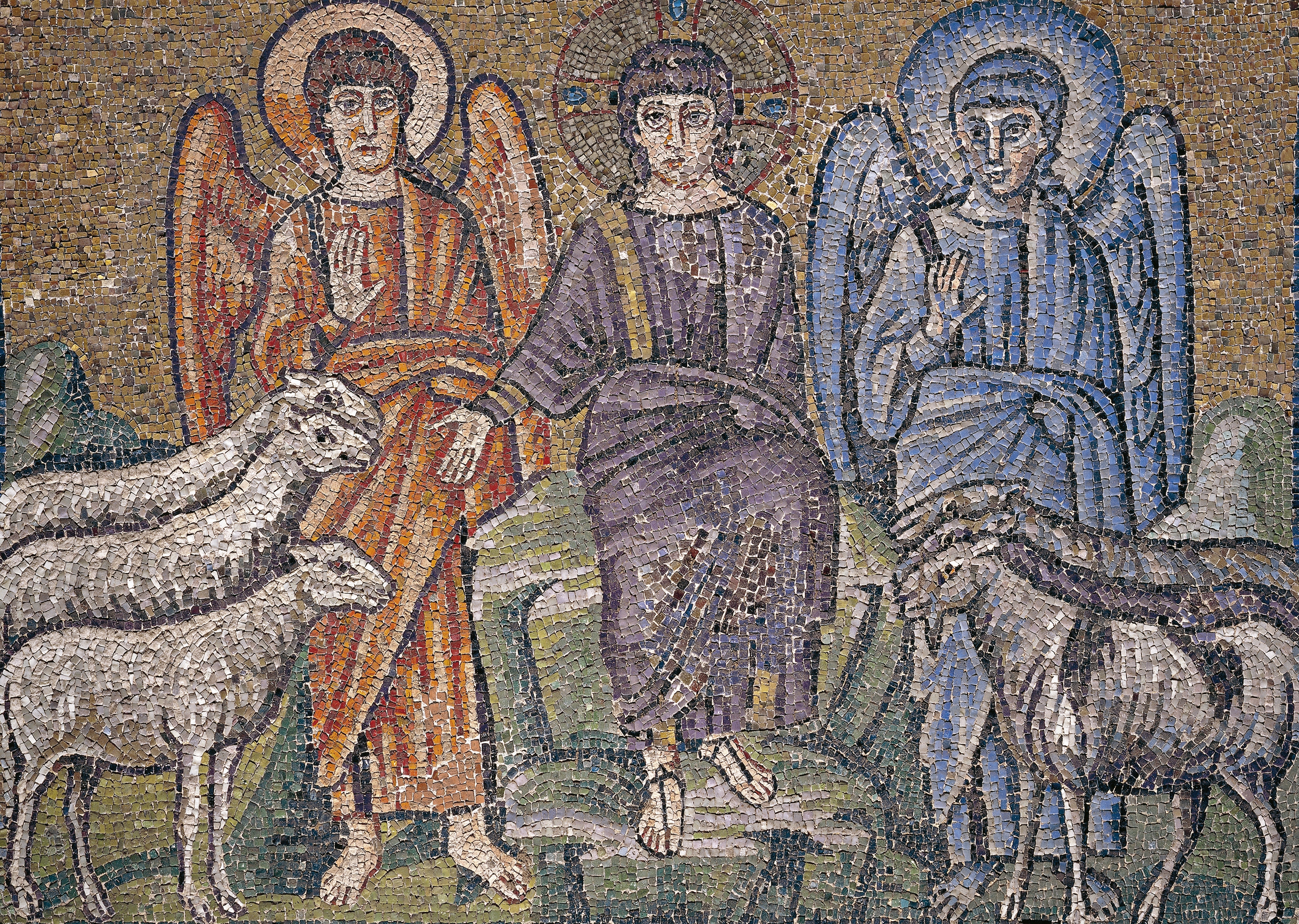
The gulf between good and evil is tessera thin in St Apollinare Nuovo, where an angel and a devil flank the mosaic figure of Jesus.
However, what many scholars deem to be the first proper representation of Lucifer came some 200 years later, at the twilight of Antiquity, on another Italian mosaic, this time in Ravenna. In 493, the Ostrogoth king Theodoric had conquered the city, then capital of the Western Roman Empire, not without a little foul play: he had slaughtered the previous ruler, Odoacer, at a banquet intended to mark a peace treaty between the two. What Theodoric lacked in morals he made up for in a zest for building, not least a church for his personal use, now known as St Apollinare Nuovo. Among the mosaic decorations encrusting its walls is a 6th-century one illustrating the parable of the sheep and the goats. To the left of Jesus, flanked by pristine white sheep, sits an angel; on the right, next to goats spotted black as their souls, is a devil. The two look much alike, except that the demon is clad in blue to the angel’s red, his gaze is deflected and his toes hint at the sharpness of claws.
This diabolical toehold on European imagination became a firm grip later in the Middle Ages, particularly from the 11th century, when Satan loomed large in churches across Europe, ruling over the Underworld and not disdaining a spot of fine dining at the expense of the damned. In Coppo di Marcovaldo’s Last Judgement mosaic for Florence’s Baptistery (1260–70), a macrocephalous Prince of Darkness, equipped with horns, snake-sprouting ears and a remarkable six-pack, gobbled up the sinners like a novel Polyphemus, with some help from hungry, monstrous reptiles.
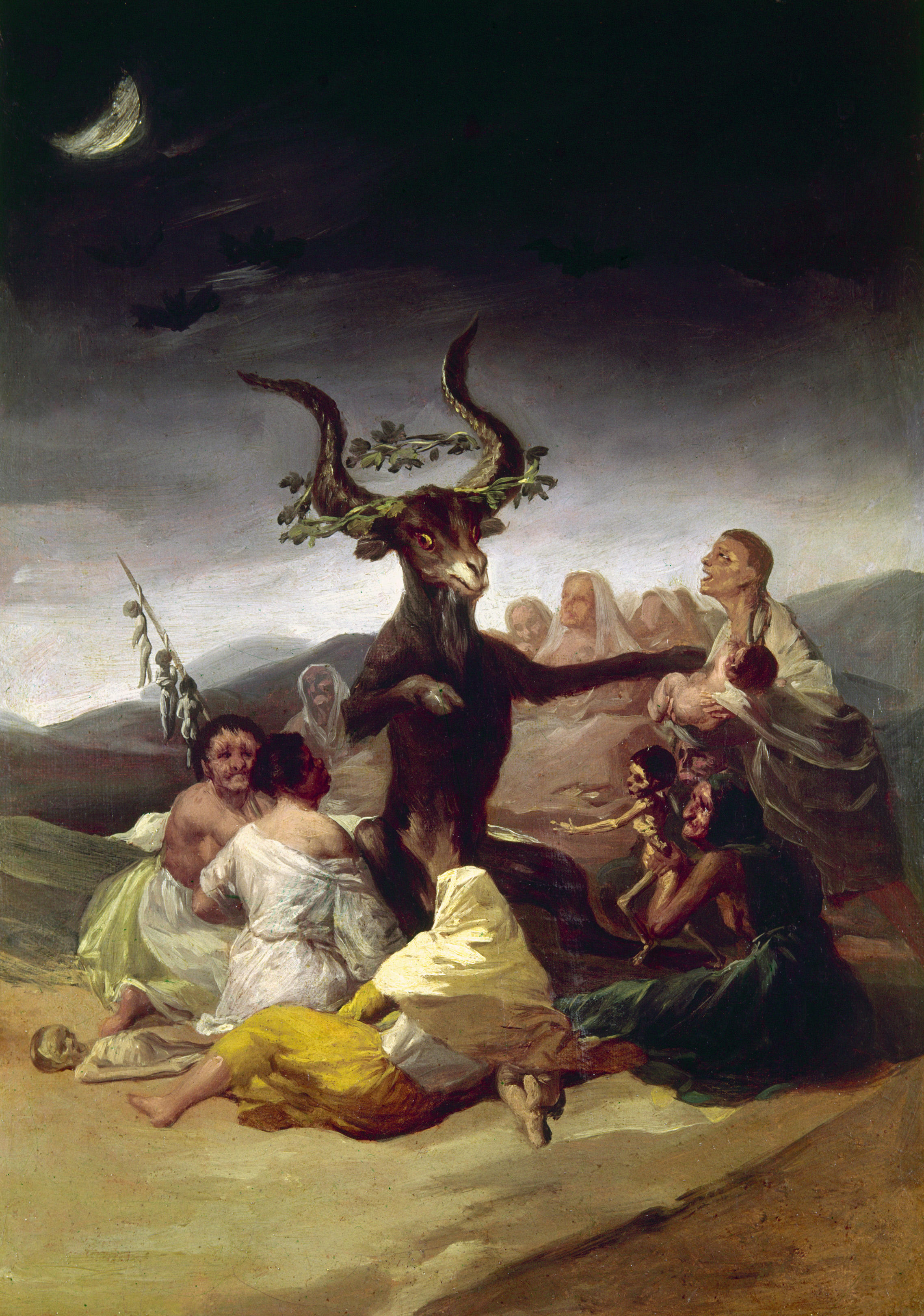
In Goya’s 'Witches Sabbath', 1795–98, his frightening Great He-Goat, with its red eyes and horns, towers over the scene.
Horrendous as he was, Satan was at least confined to Hell. Not so his minions. ‘The Devil’s countless little agents were imagined in the Middle Ages not unlike the way we imagine microbes today — always potentially present and malign,’ wrote Luther Link in The Devil: A Mask Without a Face. They picked at will from a panoply of feral features: claws, hooves, talons, goatees, ram horns, tails or wings. In the 12th-century Bible of Pamplona, demons erupted like crazed bats from the mouth of the possessed man of Gerasa, sporting webbed wings markedly different from the feathers of angels, a distinction that would endure down the centuries. Sometimes, they carried spears or pitchforks and often wore skimpy loin cloths. Having made their debut in a 9th-century Carolingian psalter, now in Utrecht in the Netherlands, these ‘shaggy cavemen skirts’, as Luther called them, returned again and again, including in the Winchester Psalter, where they were so minimal that diabolical tails peeked out almost in entirety.
Exquisite houses, the beauty of Nature, and how to get the most from your life, straight to your inbox.
This varied medieval iconography, at times frightening, at others ludicrous, responded to the many facets of the Devil: he lured, tempted, tormented, wheedled and deceived, but also meted out implacable justice to any who deserved it: images were meant to strike terror into medieval congregations, yet also give them hope that, if they behaved, God would prevail. However, those multiple shapes may have also derived from the absence of a unified model from antiquity that could be refashioned in a Christian key. Odd ‘bits’ could be borrowed from pagan gods — not least Pan and, possibly, the ancient Egyptian god Bes (in what would be an astounding reversal of his first role as protector of pregnant women and infants) — but, noted Luther, there was no diabolical equivalent to Apollo, upon which Christ had often been moulded.
It’s striking how the same artist could give his demons a startlingly different appearance — in the cathedral of St Lazare in Autun, France, some devils are large, some small, some have a human face, some look like gremlins, yet all were made by one 12th-century sculptor, Gislebertus. At Chaldon, most have three or four ‘toes’, but one has cloven hoofs. Even Giotto — who, as Andrea Begel maintained in a 2010 article in Notes in the History of Art, was consistent in painting his devils dark and woolly with fur — only gave four-toed claws and gleaming fangs to some of them. As for his Satan, he harked back to Coppo’s man-eater: blue, hairless but for a luxuriant beard, he had curving horns and large ears from which snakes slithered. Unlike the earlier Florentine specimen, however, the King of Hell in Giotto’s Arena Chapel Last Judgement in Padua (1303–1305) was fat from gorging on souls and he expelled some more from his bowels — a peculiar torment imagined by medieval artists and writers in which the damned are consumed, ejected and eaten again in a perennial cycle.
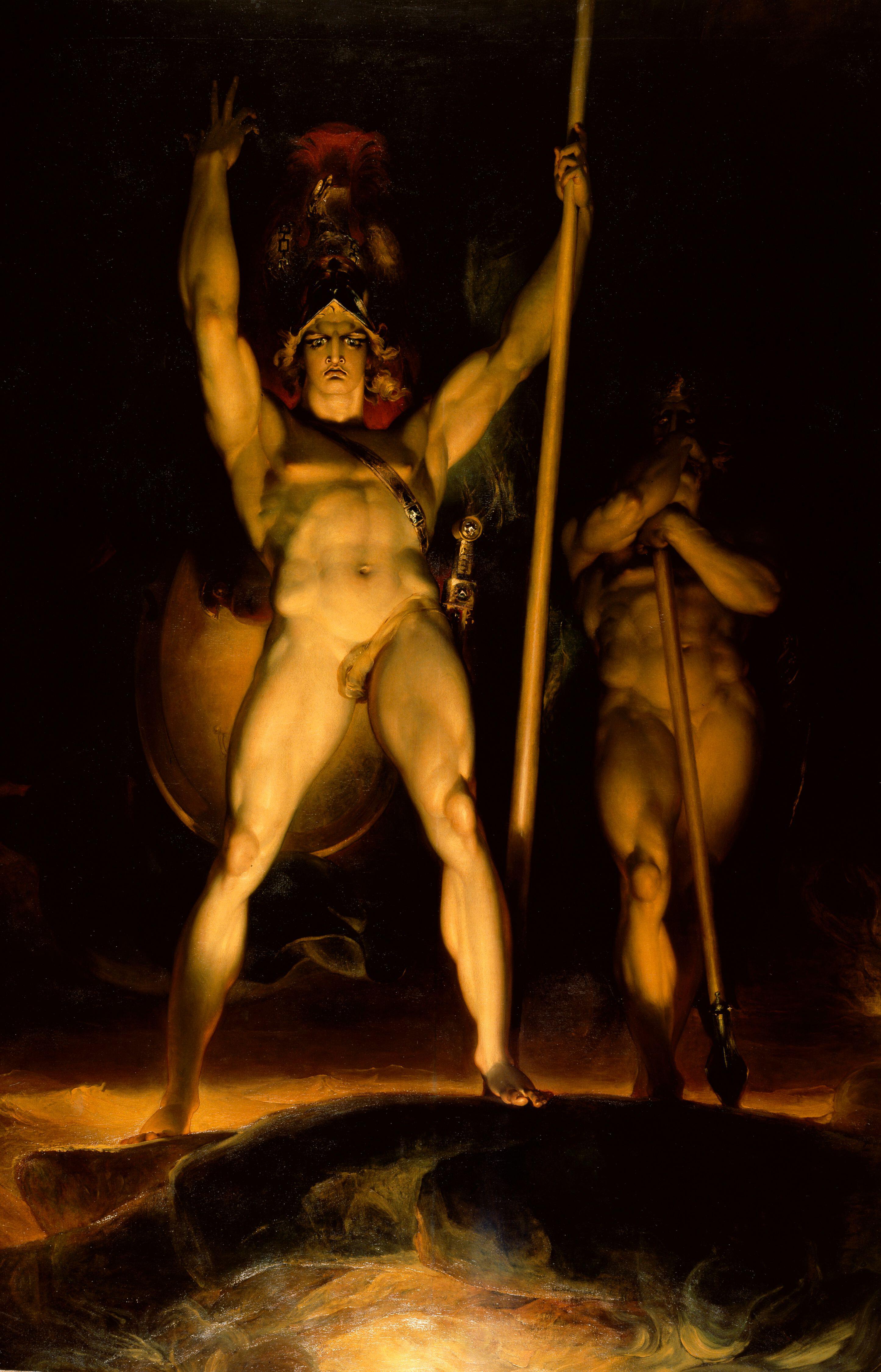
Hellishly handsome antihero: 'Satan Summoning His Legions', 1797, by Thomas Lawrence.
At about the same time as Giotto painted his blue ogre, Dante began writing his Inferno, in which he imagined the ‘Emperor of the kingdom dolorous’: ‘O, what a marvel it appeared to me, When I beheld three faces on his head!’ Although the notion of a three-headed Lucifer preceded The Divine Comedy, these verses crystallised it. In pictures such as Buonamico Buffalmacco’s fresco for the Camposanto in Pisa (1336–1341), the Devil, lynchpin of a Hell split into the Seven Deadly Sins, became enormous, enthusiastically devouring sinners with each of his three maws. Almost a century later, in about 1425–30, Fra Angelico would create a similar image for the church of Santa Maria degli Angeli in Florence, now at San Marco, except that only the torso of his pitch-black Satan emerged from the depths of the infernal lake from which he fished the damned he fed on (blood spurted copious from their torn flesh for added gore).
Not even Fra Angelico’s sanguinary Devil, however, was a patch on those conceived by Netherlandish artists, an outlandish menagerie full of sharp fangs, webbed wings, ram horns, simian noses and beady eyes that turned pictures such as The Last Judgement (1430–40) by Jan van Eyck — and the many others that followed in its wake — into the stuff of nightmares, making demons even more disturbing than in past interpretations.
In The Garden of Earthly Delights (1490–1510), Hieronymus Bosch revisited the convention of Satan consuming and excreting the damned, but his ravenous demon has the head of a bird and an anthropomorphic body (this was perhaps less of a flight of fancy than it might at first appear, coming, as it did, only a couple of decades after ‘the magistrates of Basel in Germany tried and condemned to death by fire a diabolical rooster who had dared to lay an egg’, according to Arturo Graf’s Art of the Devil). This avian horror was only one among many in a Hell populated by pigs with nun veils, disembodied ears and the Tree-Man, an unsettling medley of human head, eggshell trunk and tree-stump legs with boats as feet.
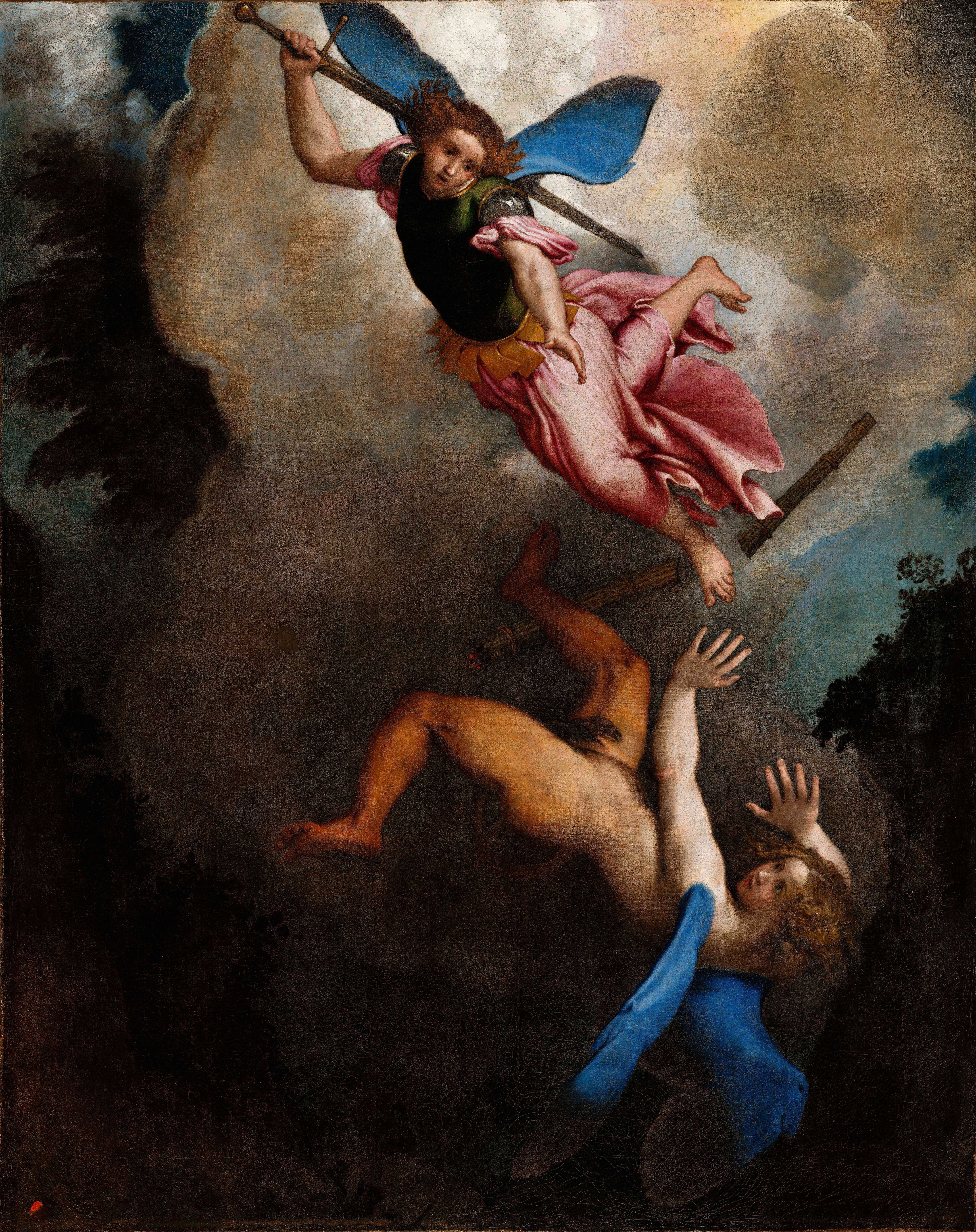
Falling angel: in Lorenzo Lotto’s 'The Archangel Michael expels Satan', of about 1545, the Devil seems to be far from monstrous.
The feral demons of the North couldn’t contrast more with the Lucifer of Renaissance Italy: no longer deformed, nor colossal, he spilled out of Hell looking just like a (frequently handsome) man. Granted, sometimes he retained a hint of horns and wings, as in Raphael’s muscular Devil being defeated by St Michael (the 1518 version — in an earlier treatment, Satan was a horned dragon). However, in pictures such as in Lorenzo Lotto’s 1545 take on the same theme, Lucifer was as delicately beautiful as the angel he fought.
An entertaining offshoot of this newfound humanity is that it gave artists a chance to hit back at their foes. Although the story is likely a fabrication, in his Lives of the Artists Giorgio Vasari maintained that, when Biagio da Cesena, master of ceremonies to Pope Leo X, criticised Michelangelo’s The Last Judgement (1536–41) as being ‘not a work for a Chapel of the Pope but for stoves and taverns’, the Florentine master retaliated by lending to Minosse — judge of the damned, as in Dante’s tradition — the features of his detractor. Guido Reni may have done something similar almost exactly 100 years later: his 1635 Lucifer — a dark-haired, powerful man in his prime pitted against a blond, soft, ephebic St Michael — probably wears the face of Giovanni Battista Pamphili, later Pope Innocent X, but then a cardinal and a rival of the artist’s patron, Antonio Barberini.
Reni painted his Lucifer in the Devil’s artistic heyday. In a 17th century riddled with war, plague, famine, an obsession for witchcraft and a nascent, but dangerous, scientific knowledge, the great master of disguise wove in and out of Shakespeare’s plays, forged diabolical pacts in Christopher Marlowe’s Doctor Faustus and peered from countless murals and canvases. Often, he looked like the offspring of the Northern Renaissance devils — in his 1645 The Temptation of St Anthony, Italian painter Salvator Rosa imagined him with the skull of a horse, the tusks of a wild boar, the horns of a ram and the tail of a rat — but at times he remained profoundly human. The curly-haired, luxuriantly moustachioed, red-nosed demon that set out to tempt St Anthony in Rutilio Manetti’s 1630 picture, wore, rather endearingly, a pair of dark-rimmed spectacles.
Later in the 17th century, however, another poet emerged who, like Dante before him, shaped the mould from which Lucifer would spring for generations to come: John Milton. One of the earliest paintings drawn from Milton’s verses came in about 1735–1740 courtesy of William Hogarth. In his unfinished oil Satan, Sin and Death, the Devil had the Herculean body of a classical hero, but the repellent face and red eyes of evil incarnate. Yet, it’s at the twilight of the 18th century — as Romanticism took hold and, after Lucifer had lain forgotten for a time, defeated by the Enlightenment’s embrace of reason — that Paradise Lost, with its fallen angel who would ‘rather reign in Hell than serve in Heaven’, really kindled the imagination of painters.
Milton, sublime before Edmund Burke refined the notion, could not fail to inspire the latter’s protégé James Barry, but also William Blake, Henry Fuseli and Thomas Lawrence. Their strapping Satans rising above the flames of Hell against an all-powerful God shed any vestige of Hogarthian ugliness to become statuesque heroes of ‘unconquerable will’, with ‘the courage never to submit or yield’. They recalled the devils of Renaissance Italy, but transcended beauty to spark Burke’s ‘strongest passion’, the sublime, in which awe mingled with fear.
That said, there was space for other interpretations, too, in the tumultuous years that saw the ideals of reason, liberty and tolerance drown in the blood of the French Revolution and the Napoleonic era. In Spain, Francisco Goya, tormented first by disease then by growing disillusionment, populated his allegories with witches, giants, horned bats and the Great He-Goat, a red-eyed, lushly-horned Devil. In The Nightmare (1781), Fuseli made his incubus, a male demon who squats on the torso of a beautiful woman and haunts her dreams, into a stumpy, big-eared, malevolent goblin. Even Blake himself (who had argued that Milton was ‘of the Devil’s party without knowing it’) was altogether less complimentary towards Dante’s Lucifer, whom he pictured as a three-headed man-eater, and remained true to the Revelation when, in about 1805, he showed Satan as a scaly creature bound by the Archangel Michael.
Yet, as the 19th century unfolded, it was the dashing antihero that had the upper hand. Wings and a suggestion of horns barely dented the athletic appeal of the Son of the Morning, at times raging, at times desperate, but always indomitable. Whether in the painting of Alexandre Cabanel or in the sculptures of Joseph and Guillaume Geefs — Joseph’s 1842 L’Ange du Mal was deemed so attractive to ‘sensitive’ female church-goers that it was removed from St Paul’s Cathedral in Liège, Belgium, and replaced in 1848 by his brother’s marginally more modest Lucifer — the Devil was, in the words of Charles Baudelaire, the ‘Prince of Exile, who [had] suffered wrong, Yet, vanquished, [rose] from every fall more strong’.
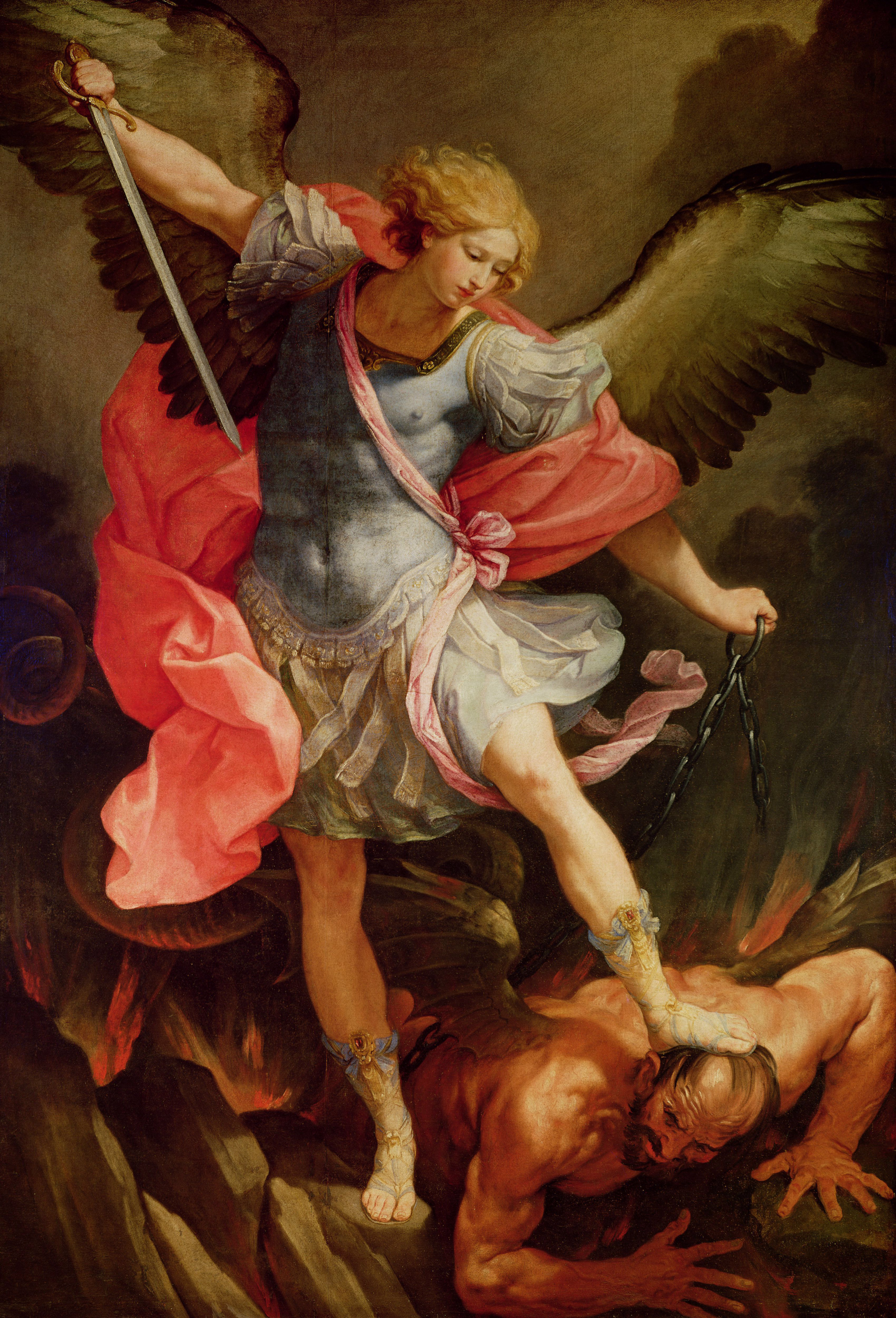
Guido Reni crushed his powerful Lucifer under the feet of an heroic St Michael in 1635.
All this changed in the 20th century, when the horrors of the Spanish flu and of two World Wars ushered a return to the grotesque forms of the earlier past — which happened to be a perfect fit for Surrealism. In 1945, 12 Surrealist and Magic Realist painters were invited to enter an art competition linked to Albert Lewin’s film from Guy de Maupassant’s novel Bel Ami, which required them to reinterpret the Temptation of St Anthony. Salvador Dalí imagined a deserted world in which a tiny, naked saint held back a mutant demonic army comprising a deranged horse with twisted hooves and emaciated elephants on spider legs, which has since become one of the most celebrated pictures on the theme. Back then, however, the Spanish artist lost to Max Ernst, who had created a forest of monstrosities with the shining carapaces of beetles, their sharp beaks and tearing fangs sinking into a red-clad St Anthony, who screamed in agony. Yet, the painting didn’t move New York Times critic Bosley Crowther: ‘It is called The Temptation of St Anthony, but it looks like a bad boiled lobster.’ Not a critique that could have been levelled at a coeval picture that rendered the Prince of Lies as it had never been done before: in one of his earliest action paintings, Jackson Pollock made Lucifer (1947) a chaos of drips, splodges and splatters in green, black, blue and ochre, with only the odd splish of infernal red in sight.
No other artist has since reinvented the Devil so completely, although Jean-Michel Basquiat also resorted to daubs and splashes to paint himself as one in his Untitled (1982), which went on to break the then price record for the artist when, in May 2016, Christie’s sold it for $57.285 million. It’s a monumental canvas in which a horned face jumps out of strokes of colour, its nose wide, its toothed grin reminiscent of those on totem poles, but in some way also of impish medieval devils.
Equally as full, but of serrated fangs, is the mouth of perhaps the cutest of all demons ever created: Takashi Murakami’s Devil KO2 (Clone X). With her purple hair bunches, thick fringe and wide eyes, she seems to have come straight out of a Japanese anime, but her bat wings, protruding tongue and barely disguised ram horns owe much to traditional Christian iconography.
She is proof that there is no end to the shapes the Great Deceiver can take — and that the Devil really is in the details.
This feature originally appeared in the October 29, 2025, issue of Country Life. Click here for more information on how to subscribe
Carla must be the only Italian that finds the English weather more congenial than her native country’s sunshine. An antique herself, she became Country Life’s Arts & Antiques editor in 2023 having previously covered, as a freelance journalist, heritage, conservation, history and property stories, for which she won a couple of awards. Her musical taste has never evolved past Puccini and she spends most of her time immersed in any century before the 20th.
